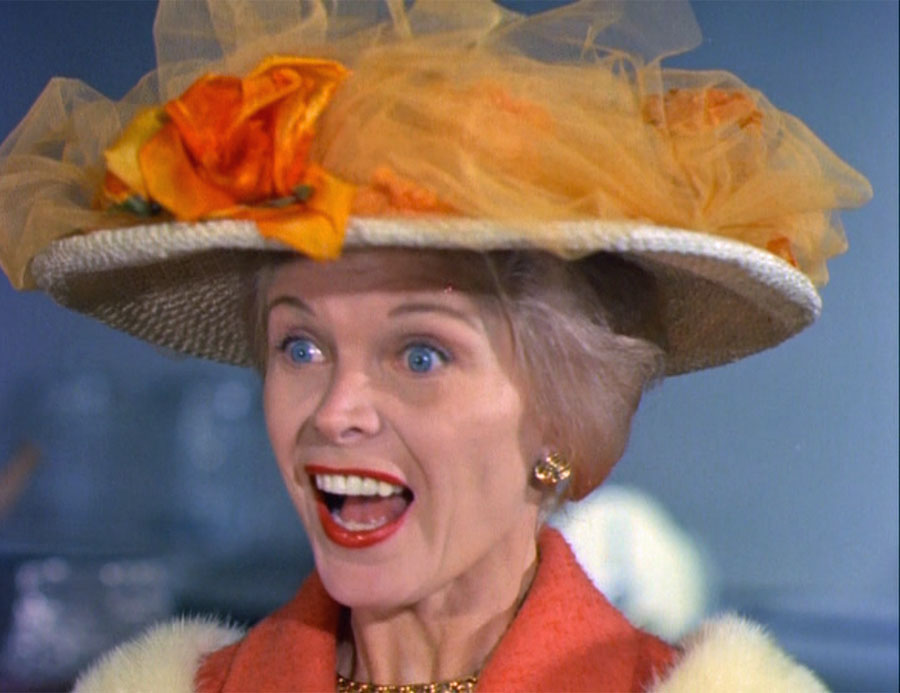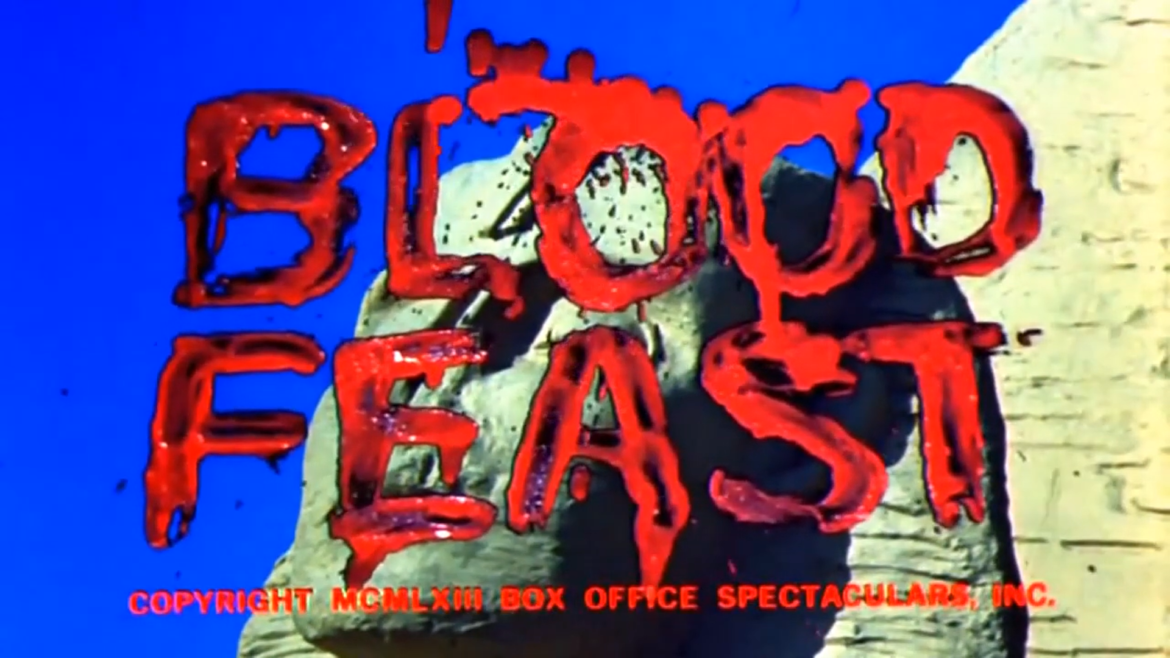I can remember it like it was yesterday. My mother was in the basement ironing. And I was down on my knees, begging shamelessly. This had gone for nearly an hour. She wasn’t even acknowledging me by then. Periodically she would state with steely finality, “I’m sorry but I don’t think a 14-year-old boy should be seeing a movie called Blood Feast and that’s that.”
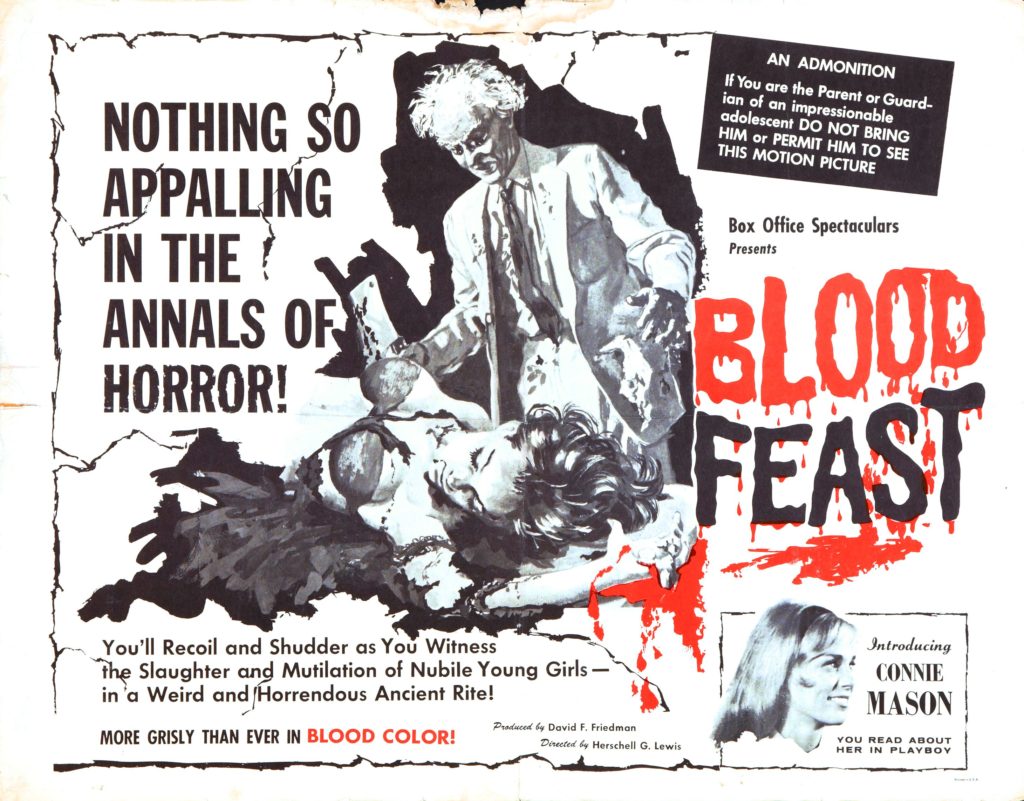
I’d seen the ads in the back of the newspaper the week before. Small at first, they grew larger every day: “Blood Feast is Coming.” By Friday, it screamed out from the page in huge red type: “Blood Feast is Here!” By then I’d reached such a pitch of frenzy I told one of the “faster” girls in class that I would do her homework for a month in exchange for a spot in the backseat of her ex-convict boyfriend’s Chevrolet. She just rolled her eyes and told me to get lost.
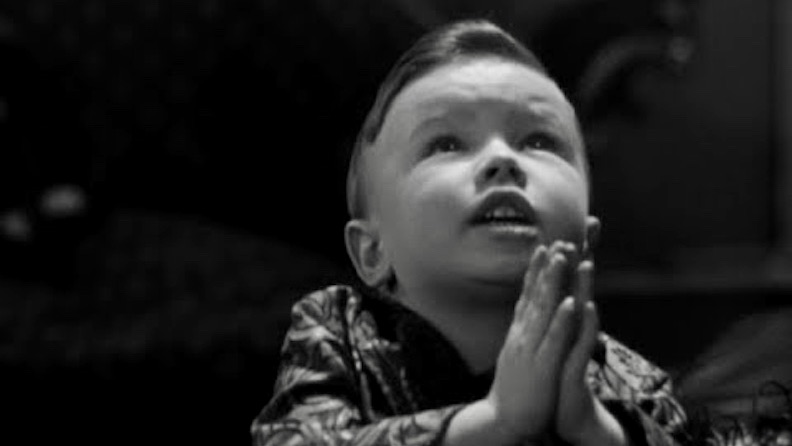
“Everyone in my class is going!” I whined to my mother. She wasn’t budging. I wailed and cried and did everything short of threatening her with bodily harm (this, after all, was the 60s and killing your parents wasn’t as popular as it is now). All to no avail. On Monday I went to school, only to be tortured by my friend with lurid descriptions of how graphic the movie was. “This nut pulls the tongue right out a girl’s mouth- and they show it!” she exclaimed to a room full of salivating, thrill-seeking youths. I returned home broken-hearted. I went to my room and shook my pubescent fist up at the rafters and defiantly cried out a curse aimed at my mother: “One day you’re going to pay for this!”
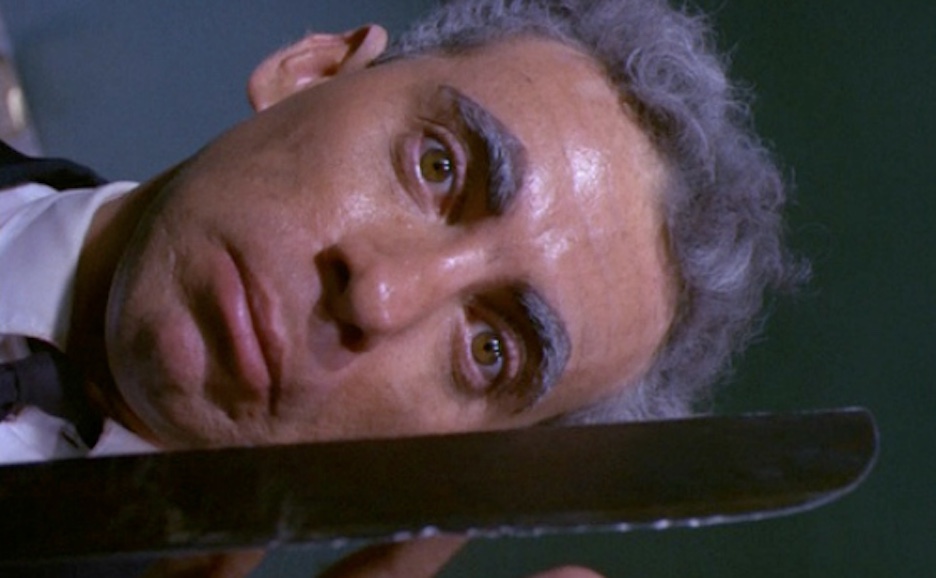
It wasn’t until 4 years later in Boston that I finally got to see Blood Feast– on a triple bill with director Herschell Gordon Lewis’s other noxious classics Two Thousand Maniacs and Color Me Blood Red. They were playing at one of the more disreputable grindhouses off the Combat Zone, and after nervously buying my ticket and finding a seat that wasn’t broken to sit in, the lights went down. As the film unfolded in “blood color” I thought to myself uncomfortably, “Jesus- this is rough- maybe my mother was right….” But after three hours of bad acting, washed-out color, inaudible sound and gratuitous gore I suddenly “got it”- the crassness, the inadvertent humor, the joyous sleaziness of the films. The whole experience filled me with a preternatural glow. Even having to kick aside a rat that skittered under my feet did nothing to hamper the joy I felt that memorable evening.
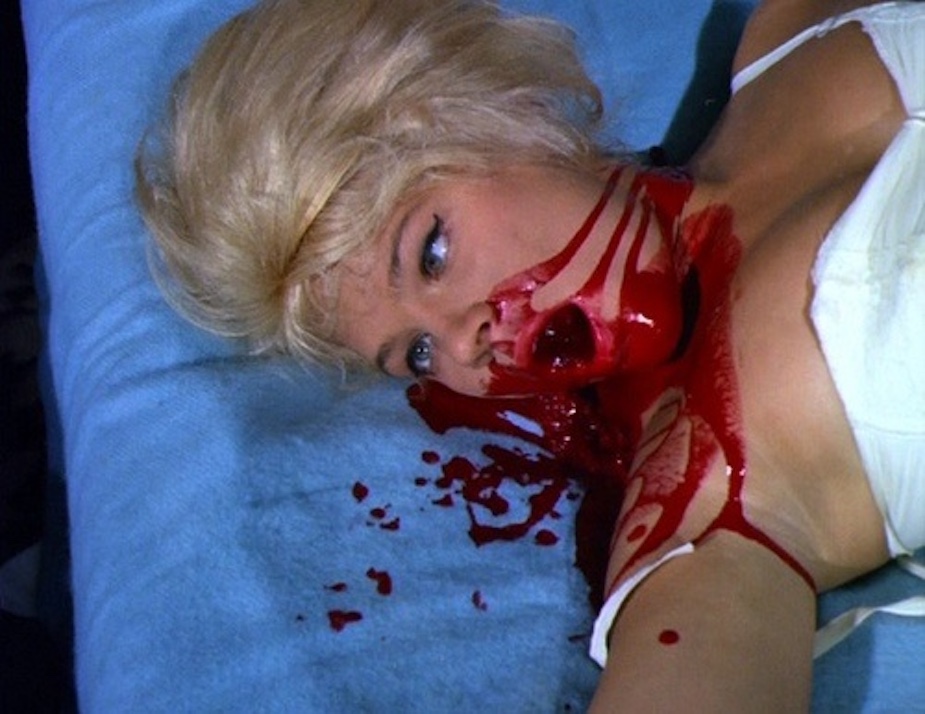
They did “show it all”- and that’s probably the key to what exploitation is all about. Exploitation movies existed because of what Hollywood wouldn’t or couldn’t show. Subjects like drugs (Wild Weed); miscegenation (I Passed for White); reprehensible backwoods customs (Child Bride); nudism (Hideout in the Sun) and even birth (Mom and Dad) were their staples. These movies, made for cheap and shown in drive-ins throughout the South and inner-city theaters, turned a handsome profit, giving audiences a supposed lesson while actually treating them to sordid subject matter and lots of nudity. Director Herschell Gordon Lewis shrewdly realized another thing Hollywood movies didn’t show was actual gore and so he reveled in it in a series of gleefully grisly horror films. Hey, if it wasn’t for Lewis would Sam Peckinpah’s The Wild Bunch ever have been made?
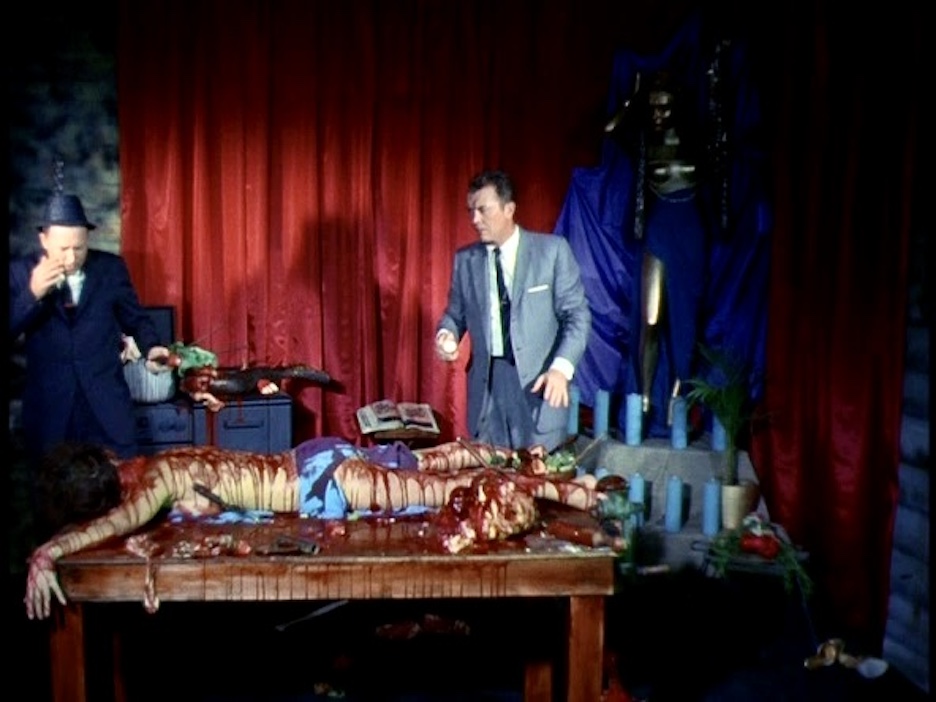
The prosperous glory days of exploitation films are long over. Hollywood eventually co-opted all their attributes and even their short-comings. The extinction of drive-ins and many inner-city theaters and the skyrocketing cost of advertising made these types of films obsolete. I can’t even fathom what young people would even think of a movie like Blood Feast today. They would probably be bored stiff and turn it off after 20 minutes.
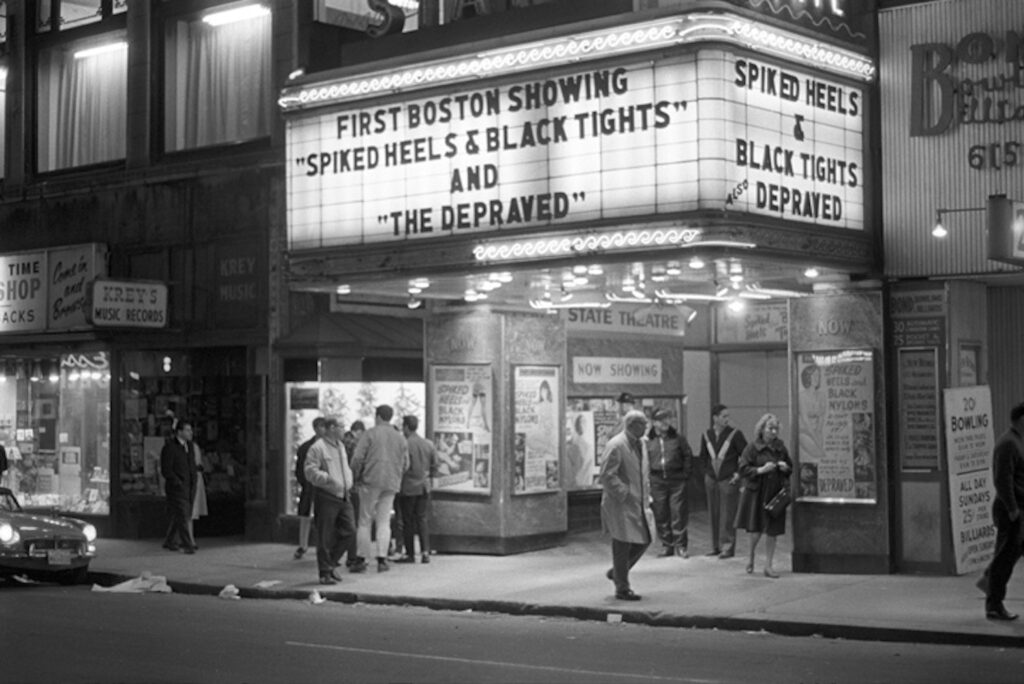
But for me, sitting there in that seedy Combat Zone theater watching a “nut pull a tongue out” changed the course of my life. I spent years afterwards writing endlessly about the underbelly of exploitation films, forever turning over rocks to find other oddities that would appall, disgust and annoy mainstream sensibilities. You cannot imagine the great joy of discovering a movie as sleazy and sublime as Shanty Tramp. The biggest irony is that next to my bed hangs a framed original one-sheet for Blood Feast, one that John Waters sent me after interviewing Herschell Gordon Lewis for his book Shock Value. On it, Lewis signed his autograph and, “To Dennis, with Bloody Friendship.”
Fuck you, mom.
